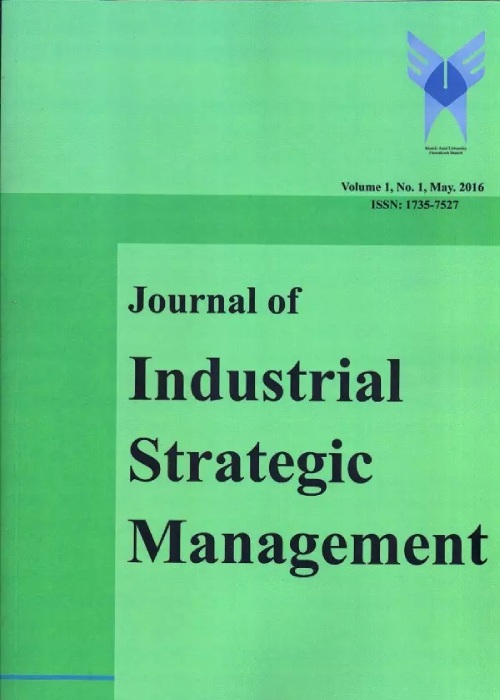فهرست مطالب

Journal of Industrial Strategic Management
Volume:8 Issue: 1, Winter 2023
- تاریخ انتشار: 1402/06/10
- تعداد عناوین: 3
-
Pages 1-10Developing a suitable plan and optimal use of available facilities are considered important factors in today's competitive world. The aim of this research is to provide an innovative genetic algorithm for the problem of investment in project resources. In terms of the purpose, this research is an applied and, in terms of data collection, it is of a mathematical analytical type. According to the positive experiences of using genetic algorithm to solve the problems of the specification in limited resources, this research aims to create two genetic algorithms for a type of allocation problem called investment problem in resources. Genetic algorithm designed was tested on the problems investigated by Mohring representing that the above problems are not complicated enough, because genetic algorithm has obtained optimal solution for the problems rapidly. So, more problems were generated by Progen software through more tests, and, in general, more than 15,000 problems tested by genetic algorithm. Then, by making changes in the above algorithm and using Akpan method and modifying this method, genetic algorithm has been improved. The method developed has also been compared with the previous method during the tests. After setting the parameters on 20 activity problems, the tests were conducted on 10 and 14 activity problems. It represented that new algorithm works more efficiently on these problems. On 30 activity problems in Dergzel and Kims, new and previous genetic algorithms were compared by using multivariate variance analysis and Duncan's test indicating a significant improvement in the answers.Keywords: Project Scheduling, Genetic Algorithm, Resource Limitation
-
Pages 11-19Economic development has always been the focus of Iran's statesmen and economists, but there was no consensus on the method of national economic development until the last decade. Considering the nuclear issue and different approaches in the international arena towards Iran, multilateral sanctions and the intensification of sanctions, Iranian economists have tried to present a local model called resistance economy in order to get out of the current situation. The "exploratory" approach has been carried out in order to identify the management categories of the system of evaluating and monitoring the realization of resistance economy policies, emphasizing the statements of Ayatollah Khamenei. The current research is qualitative and with an "exploratory" approach, which has identified the managerial categories of the evaluation and monitoring system for the realization of resistance economy policies by posing questions and without a hypothesis, emphasizing the statements of Ayatollah Khamenei. Research data has been collected using research literature and interviews with 10 elites of the national and political economy of the Islamic Republic of Iran. During the interview with 10 of the "politicians of the approved policies of the Islamic Council" and "scientific experts", the collected information and interview data were coded and a compilation model was presented with MAXQDA software. The dimensions of the resistance economy model and its components the system of evaluating and monitoring the realization of resistance economy policies is hopefully the proposed model in writing the development plans of the Islamic Republic of Iran to be exploited in the resistance economy.Keywords: Management, Iran's economy, Sustainable Growth Policy, resistance economy, Ayatollah Khamenei's statements
-
Pages 20-30The balance scorecard represents the tool management strategy as a set of processable requirements. Of course, the use of supply chain management based on the balanced scorecard requires the acceptance of weaknesses of the balanced scorecard, such as the lack of a mechanism for inefficient detection, the absence of a scoring system, the lack of recognition of the delay between operations and its effect on performance. In order to overcome the weaknesses mentioned in this research of dynamic modeling, which is a tool to investigate and analyze the behavior of a system in the course of taking into account causal and apparent relationships and existing dynamics. In this research, based on the combination of balanced scorecard and dynamic modeling, an executive methodology is presented to provide the model and scenarios are implemented on a model of supply chain management.Keywords: supply chain management, Balanced Scorecard, System dynamic

